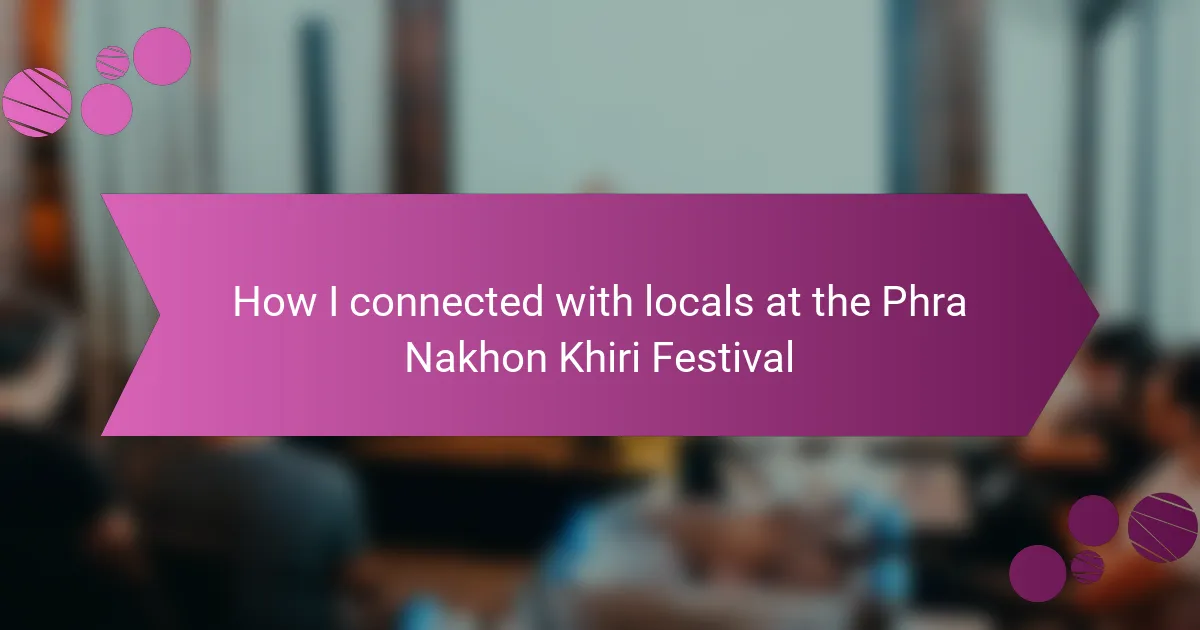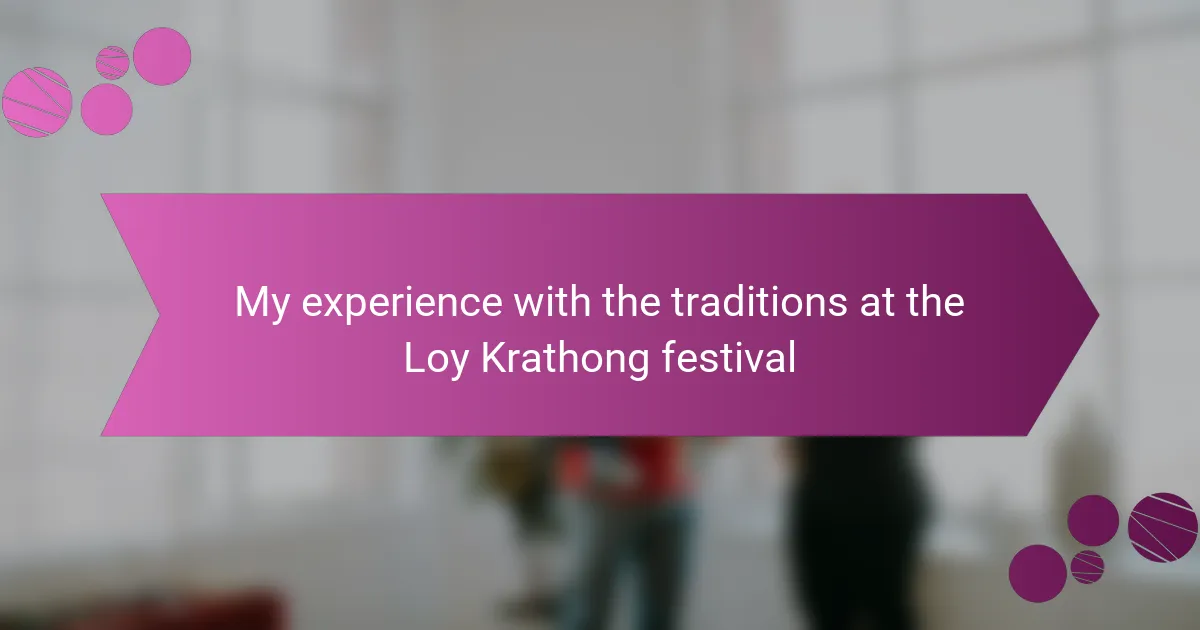Key takeaways
- Thai music festivals blend traditional and contemporary music, showcasing diverse genres alongside cultural performances and local cuisine.
- The Phra Nakhon Khiri Festival fosters community engagement, offering opportunities for meaningful connections through shared experiences and local customs.
- Interacting with local musicians and artisans enriches the festival experience, allowing for deeper understanding and appreciation of Thai culture.
- Tips for connecting with locals include learning basic Thai phrases, attending workshops, and embracing open-mindedness for authentic cultural exchange.
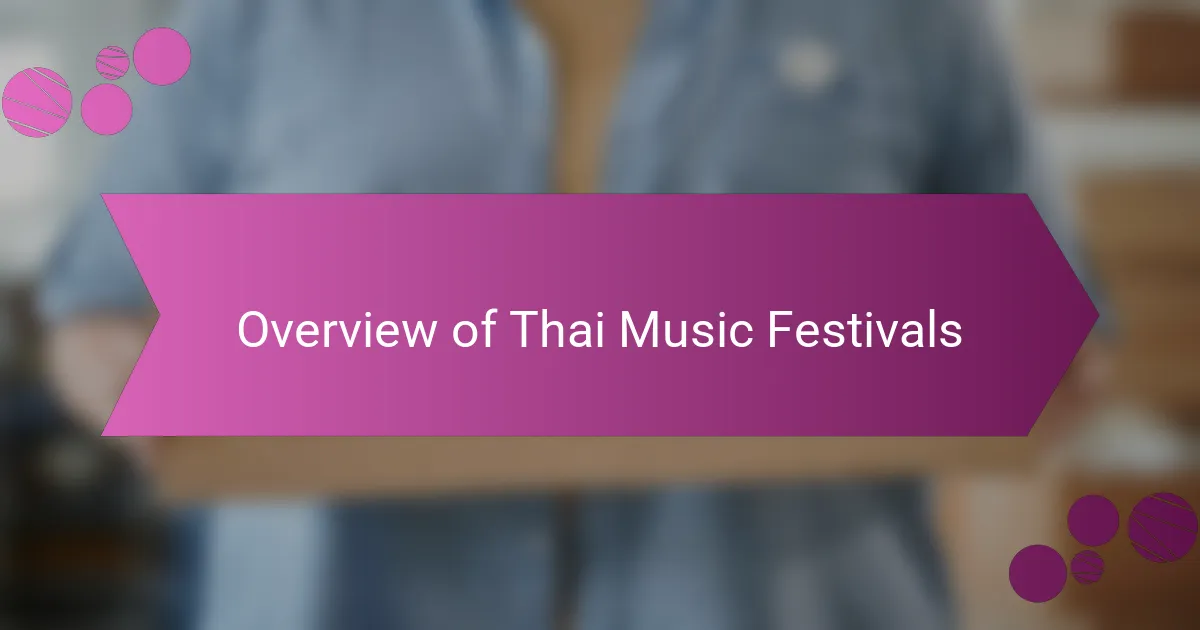
Overview of Thai Music Festivals
Thai music festivals are vibrant celebrations that blend the rich cultural heritage of Thailand with contemporary musical trends. Each festival offers a unique experience shaped by local traditions and community involvement. Personally, I find that these events bring people together in a way that transcends language and background, creating a sense of unity and shared joy.
Here are some key features of Thai music festivals that stand out to me:
- Diverse Genres: Festivals often showcase a mix of traditional Thai music, contemporary pop, rock, and even international acts, appealing to a wide audience.
- Cultural Performances: In addition to music, you can experience traditional dances and art forms, giving a broader insight into Thai culture.
- Local Food and Drink: Street vendors and local eateries provide a culinary journey, allowing attendees to savor authentic Thai flavors while enjoying the festivities.
- Community Engagement: Festivals encourage local participation, from organizing events to performing, fostering a familial atmosphere that feels welcoming.
- Unique Venues: Many festivals are held in picturesque locations, from riversides to historic sites, enhancing the overall experience and connection to the environment.
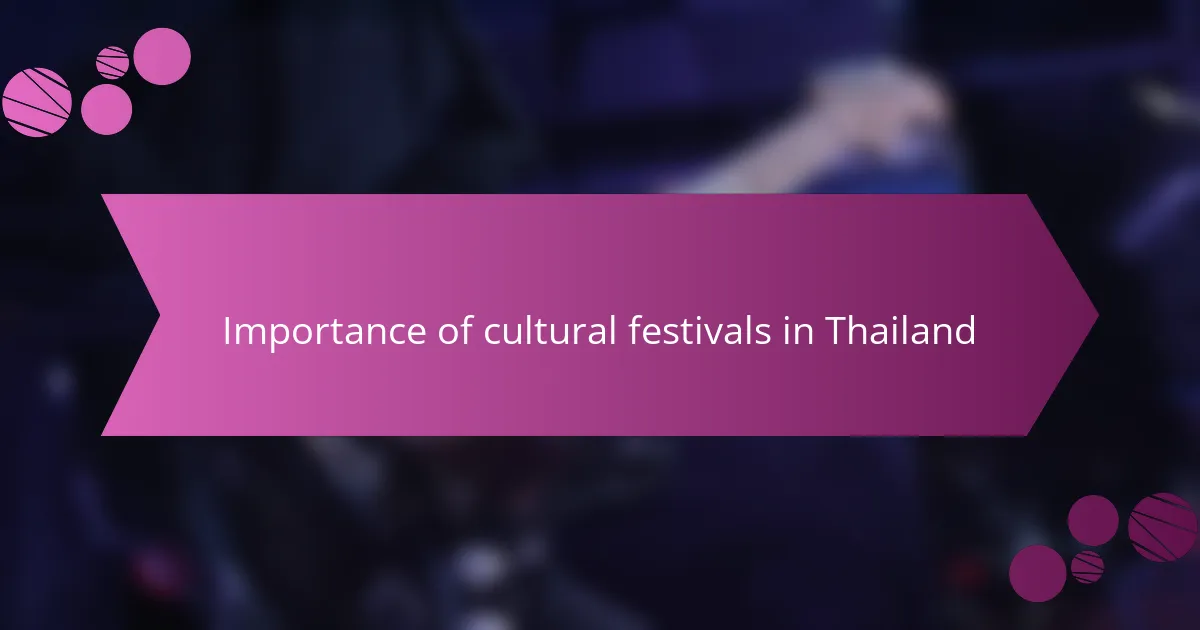
Importance of Cultural Festivals in Thailand
Cultural festivals in Thailand serve as vibrant expressions of tradition and community. They’re not just about celebration; they’re about preserving the rich tapestry of Thai heritage. I remember feeling this deeply at the Phra Nakhon Khiri Festival, where the energy of traditional music and dance brought locals and visitors together in a shared appreciation for our cultural roots.
Attending such festivals allows us to experience local customs firsthand. I was warmly welcomed by locals who eagerly shared stories and insights about the festival’s significance. These connections deepened my understanding of Thai culture and left me with cherished memories.
- They foster community bonds and strengthen social ties.
- Festivals highlight the unique cultural identity of different regions.
- They provide a platform for artists to showcase their talents.
- These events enhance tourism, which benefits local economies.
- Festivals create opportunities for cultural exchange and learning.
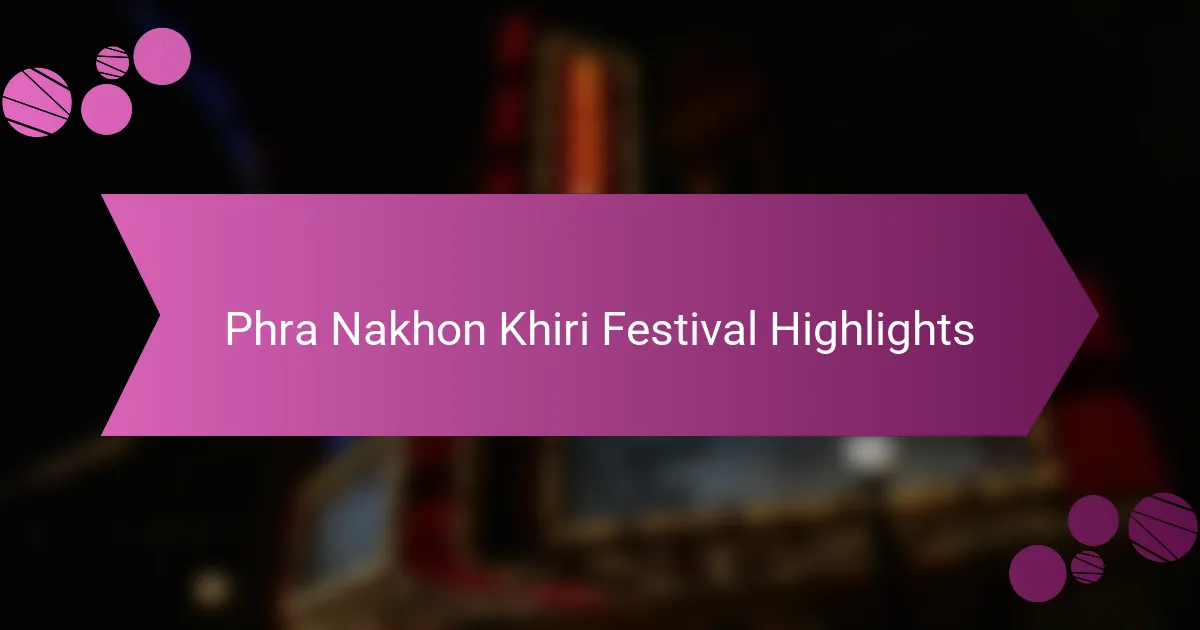
Phra Nakhon Khiri Festival Highlights
The Phra Nakhon Khiri Festival is a sensory overload in the best way possible. The sprawling grounds of the historic Khao Wang offer breathtaking views, while the sound of traditional Thai music fills the air. I still remember the first time I stood amidst the vibrant colors of costumes and the infectious energy of local performers. It truly felt like being part of something larger than life.
One of the highlights that struck me was the array of traditional dance performances. Each movement seemed to tell a story, rich in history and emotion. I was captivated by how the dancers, often from the local community, infused their personal flair into each performance, making the ancient art form alive and relatable. Have you ever watched a dance that made you feel connected to a culture in a way that words cannot express? I certainly did, as I sat among the locals who cheered and celebrated every step.
And let’s not forget about the delicious food! The festival is a culinary delight, with street vendors offering mouthwatering local dishes. I vividly recall tasting the sweet mango sticky rice for the first time while chatting with a local vendor who shared anecdotes about Thai ingredients. Those moments not only satisfied my taste buds but also gave me insight into the heart and soul of Thai cuisine. It’s moments like these that I believe truly enrich our festival experience, creating lasting connections over shared flavors and stories.
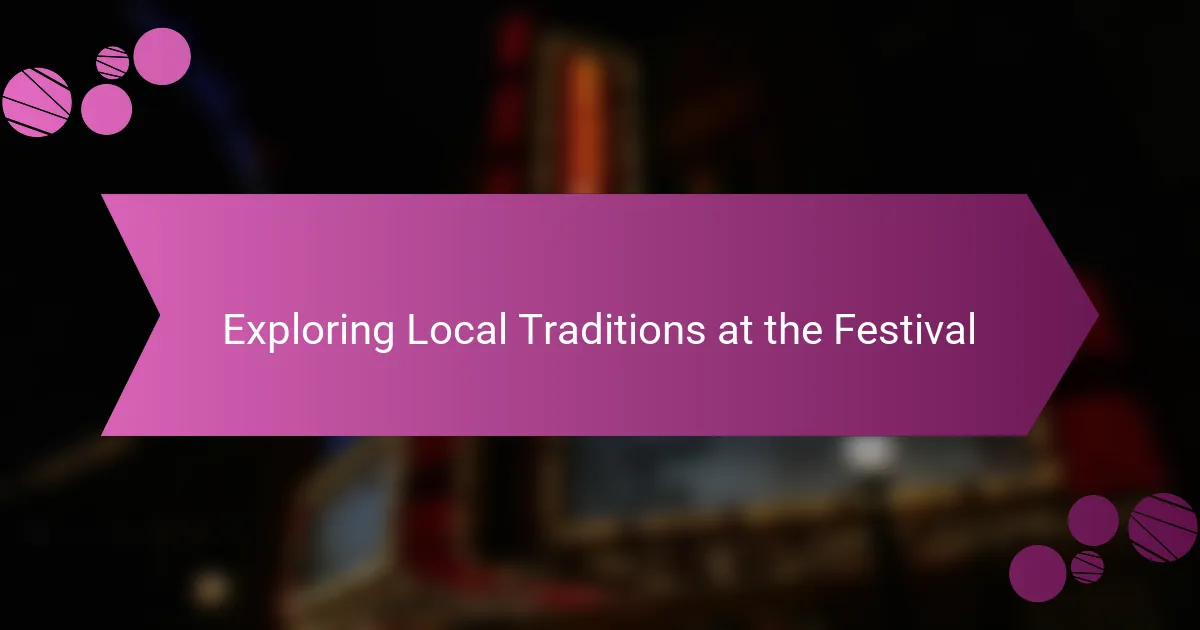
Exploring Local Traditions at the Festival
As I wandered through the festival grounds, I stumbled upon a group of locals engaged in a traditional craft. It was mesmerizing to watch their skilled hands create intricate designs that reflected their heritage. The artisans were more than eager to share their stories, explaining the symbolism behind each piece. It made me wonder: how often do we get a glimpse into the craftsmanship that defines a culture?
During the festival, I found myself intrigued by the local games and customs that brought everyone together. Participating in a friendly competition, I felt an instant connection with the people around me. Laughter echoed as we cheered each other on, a beautiful reminder of how shared traditions can bridge gaps between strangers. Have you ever experienced a moment when you felt an immediate bond with someone over a shared activity? That’s exactly how I felt!
The Phra Nakhon Khiri Festival also showcased unique rituals that highlight the region’s rich history. One particularly moving moment was watching the ceremonial procession. The vibrant colors, the rhythmic sounds, and the palpable reverence in the air left an imprint on my heart. It made me reflect on the importance of honoring traditions that connect us to our ancestors. Isn’t it fascinating how these practices can tell stories that transcend time?
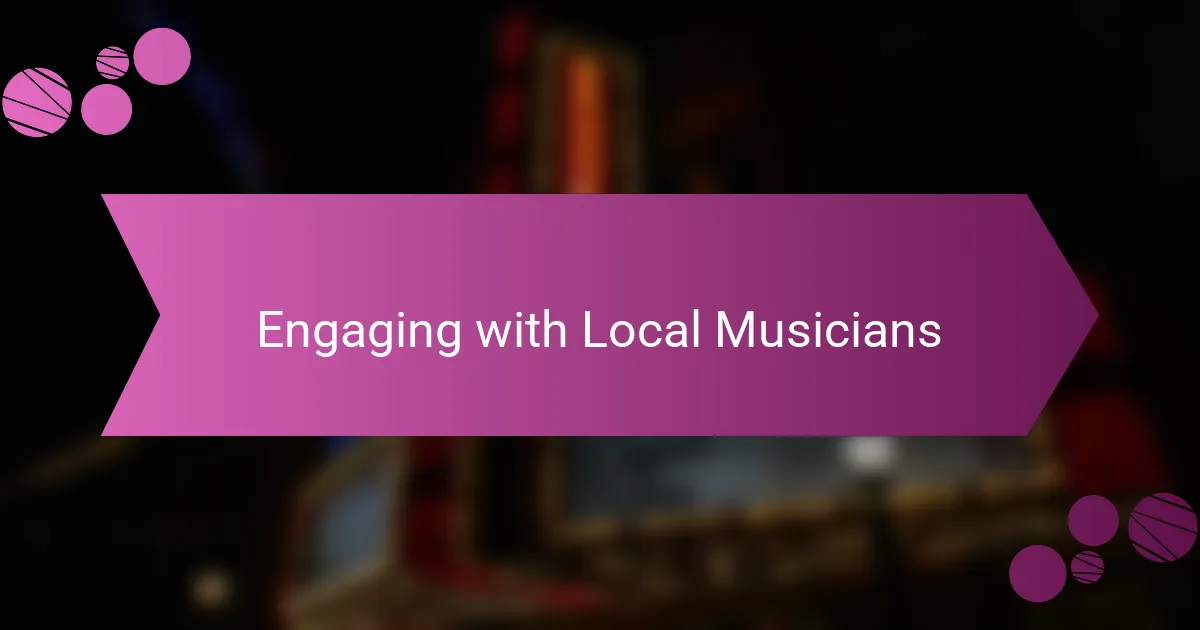
Engaging with Local Musicians
At the Phra Nakhon Khiri Festival, I found myself immersed in the vibrant world of local musicians. Their passion for Thai music was palpable; each note played seemed to tell a story of their culture. I remember discussing the unique instruments they used, like the ‘saw duang,’ and feeling a genuine connection as they shared their personal experiences and the meanings behind their songs.
As I wandered through the festival grounds, I was drawn to a small group playing traditional folk music. I struck up a conversation with one of the musicians, a kind elderly man, who instantly welcomed me into their fold. His laughter and storytelling made it feel like we had known each other for years, bridging the gap between a tourist and a local.
- I learned about the intricate history of the songs they performed.
- Personal stories about the evolution of Thai music were shared generously.
- They invited me to join them in their dance, making me feel like part of the community.
- I discovered how important music was in preserving their cultural identity.
- The musicians’ enthusiasm inspired me to learn a few traditional melodies myself.
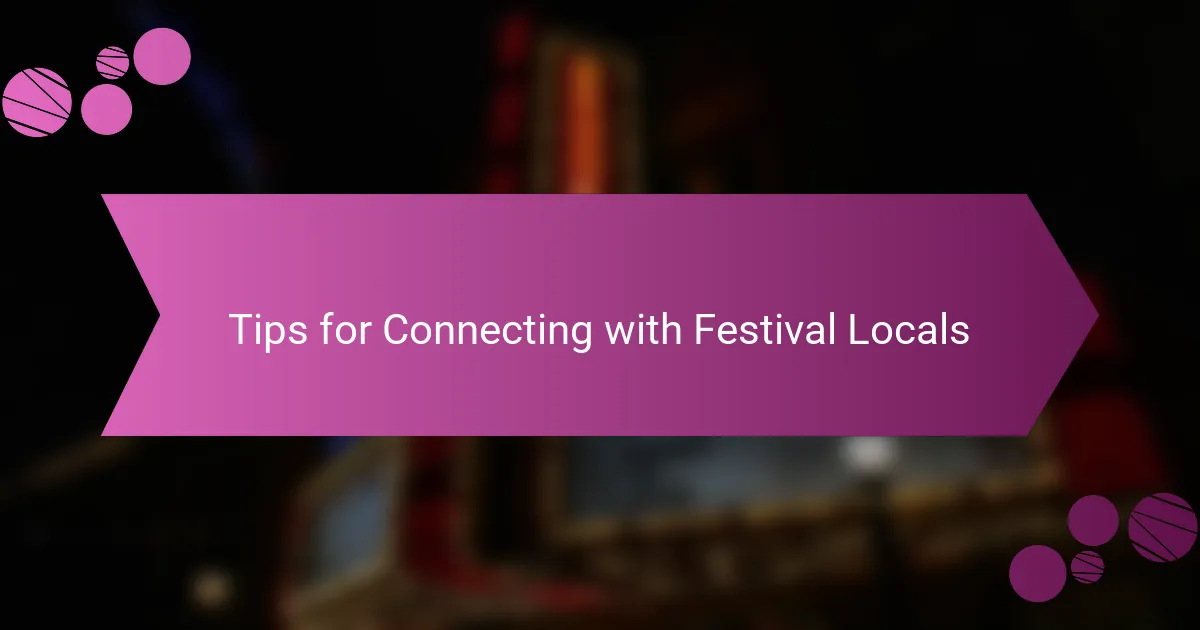
Tips for Connecting with Festival Locals
Connecting with locals at Thai festivals can deeply enrich your experience. At the Phra Nakhon Khiri Festival, I found that even simple gestures, like sharing a smile or complimenting someone’s outfit, opened doors to wonderful conversations. I remember chatting with a woman who lovingly described the traditional music performances; her passion was infectious and gave me a deeper appreciation for the culture.
Here are some tips to enhance your interactions with locals:
- Learn a Few Thai Phrases: Even basic greetings can break the ice and show respect.
- Attend Workshops: Participating in local crafts or music sessions allows you to meet people who share your interests.
- Share Food: Offering to try local dishes or snacks can spark genuine conversations.
- Ask for Recommendations: Locals love to share their favorite spots and hidden gems in the festival area.
- Be Open-Minded: Embrace the differences and don’t hesitate to step outside your comfort zone.
- Smile and Be Friendly: A friendly demeanor often leads to warm interactions, making locals feel at ease.
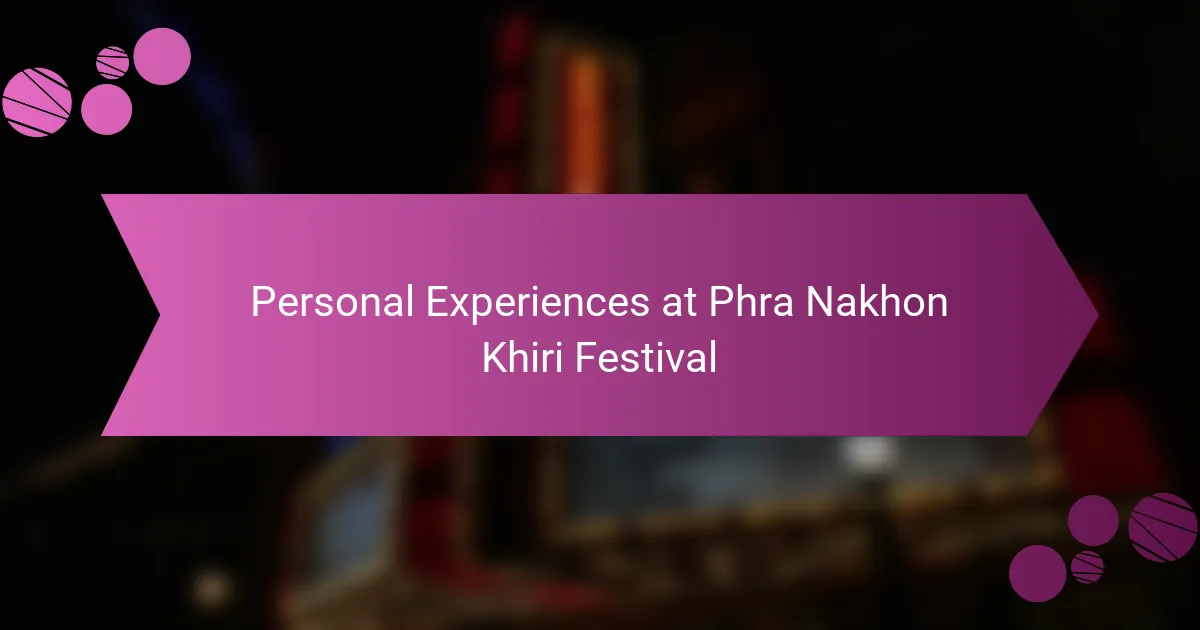
Personal Experiences at Phra Nakhon Khiri Festival
Attending the Phra Nakhon Khiri Festival was more than just a feast for the senses—it was an opportunity to connect deeply with the locals. I vividly remember joining a circle of teenagers who were teaching each other traditional dance moves. Their laughter and welcome made me feel like part of the community, bridging the gap between cultures effortlessly.
A few moments that stood out to me include:
– Shared meals: Sampling local dishes while locals eagerly shared their recipes.
– Music exchanges: Jamming with musicians, which sparked spontaneous collaborations that felt like magic.
– Cultural stories: Engaging with elders who spoke passionately about their heritage—each tale felt like a treasure.
– Artistic expression: Joining in on a live mural painting that expressed our collective joy during the festival.
These interactions were rich with genuine warmth and showed me the heart of the festival beyond its vibrant displays.
